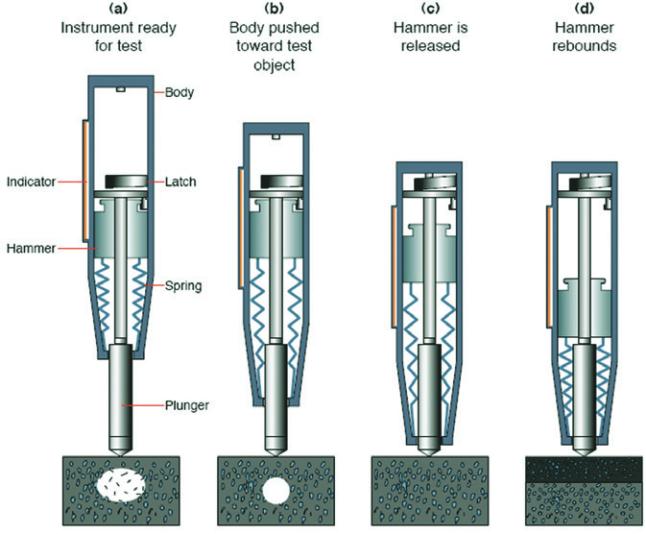Basic HTML Version

758
IBRACON Structures and Materials Journal • 2012 • vol. 5 • nº 6
Pull Off test to evaluate the compressive strength of concrete: an alternative to Brazilian standard techniques
1. Introduction
In reinforced concrete structures, the strength of concrete is one
of the most important properties, being the main parameter used
for design. Ways to evaluate this property in finished structures or
structures in use, without damage to its functionality or appearance,
have been the concern of engineering professionals over the years.
In civil engineering there are many test methods to evaluate the
strength of concrete. The most frequently used test is to measure
the compressive strength of concrete at age of 28 days using
simple compression in cylindrical and prismatic specimens. The
simple compression test on cylindrical specimens is standard both
in Brazil and the USA [1, 2], and in Europe, both shapes are stan-
dardized [3, 4].
Despite the ease of implementing this kind of test, both in terms
of specimen preparation as well as in getting results, the test re-
quires planning before the execution of structures, through the
creation of test specimens. This fact does not favor the inspections
in finished structures or control the development of the material
resistance over time.
In recent decades, other tests were developed, like non-destruc-
tive tests which, through faster, simplest and more economical
processes allow obtaining information on the concrete properties.
These tests also provide an estimate for the compression strength
of the measured concrete in situ, eliminating the need of extraction
of many specimens for determination of the compressive strength
of the inspected structures. The most popular tests are the re-
bound hammer and the ultrasound test, which are standard in Bra-
zil. There are also others tests such as penetration resistance of
hardened concrete, Pull Off, Pull Out and Break Off, presenting
themselves as viable alternatives [5, 6, 7, 8, 9, 10].
The non-destructive techniques produce little or no damage to the
inspected part, can be implemented in concrete structures in use
and allow the detection of problems still in early stages. This can
be an advantage, especially from a financial perspective, because
when a problem is detected at an early stage the necessary inter-
ventions can be done before the complete damage of the structure.
The choice of the test method depends on several factors such as
structure access, cost of intervention, damage caused during the
execution of the test, speed of execution, characteristics and type
of assessment to be achieved [9]. This paper discusses the re-
bound hammer test [11] and the ultrasound test [12], standardized
in Brazil, in addition to the Pull Off test, as standardized in Europe
by BS 1881 part. 207 [13].
2. Non-destructive test
2.1 Rebound hammer test
Currently, the non-destructive and most commonly used test is
the rebound hammer test. This method is based on measuring the
surface hardness of the concrete and, as the response variable,
has an index that can be used to estimate the resistance from cor-
relation curves. The rebound hammer is portable, simple and in-
expensive. This equipment enables the fast acquisition of a large
amount of data.
The equipment consists of a cylindrical tube in whose interior there
Figure 1 – Rebound Hammer test [14]

